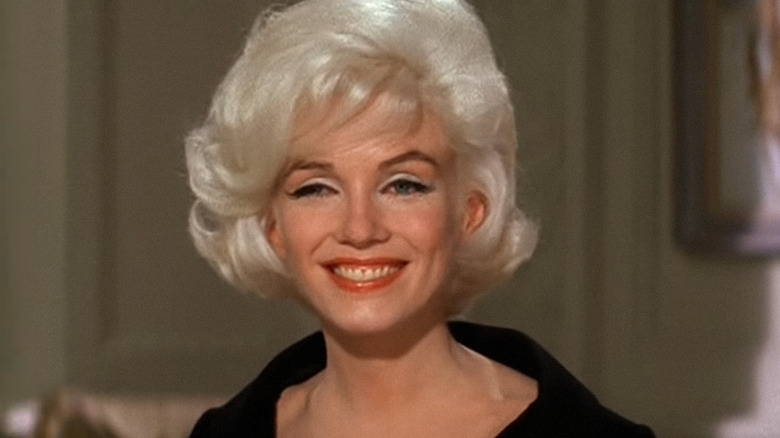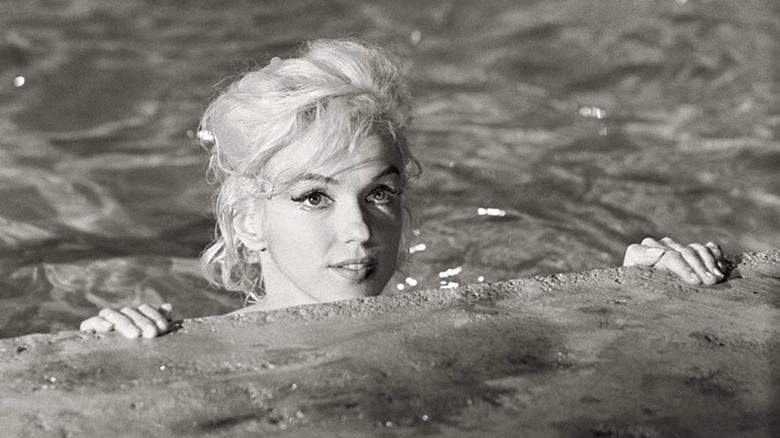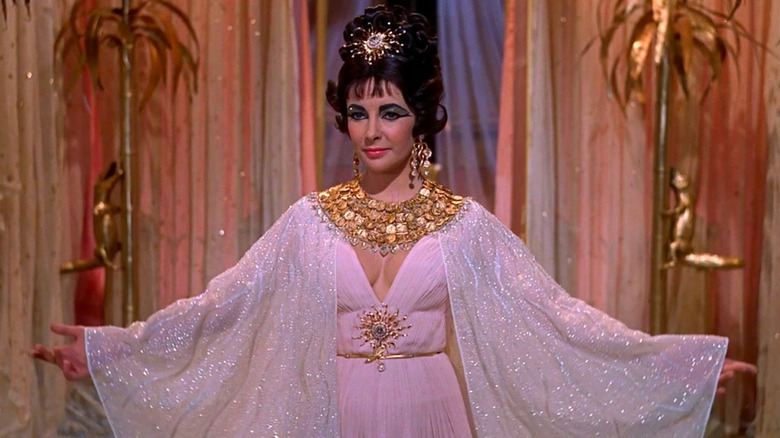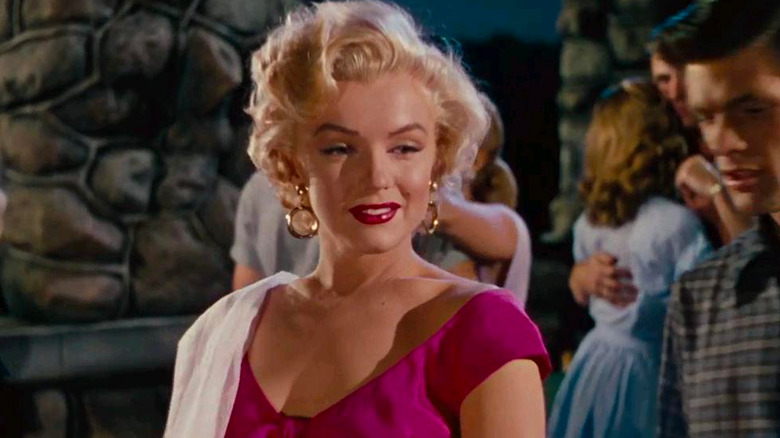A Behind-The-Scenes Crisis At Fox Cost The World Marilyn Monroe's Final Film
As the drama with Warner Bros. Discovery has managed to remind us recently, not every film is assured of a release, theatrical or otherwise. Sometimes a film costs too much — and takes too long to film — to seem like a logical, profitable project. Other times, irreconcilable differences between cast and crew members can derail a film altogether. When it comes to "Something's Got to Give" (the one with Marilyn Monroe, not the one with Diane Keaton), it was a bit of all three. The film was designed as a reimagining of the Cary Grant classic "My Favorite Wife," directed by George Cukor ("The Philadelphia Story," "Gaslight") and starring Dean Martin alongside Monroe.
On paper, that's a recipe for a thoroughly solid film. It was also the last that Monroe would ever shoot but never got the chance to complete. Production stalled when 20th Century Fox fired Monroe in 1962, and it halted entirely after her death just a few months later. Much of the conversation surrounding the film focuses, naturally, on Monroe, whose behind-the-scenes struggles are often more infamous than her performances. But the blame for the film's demise can't rest entirely with the late actress. There were bigger forces at work at Fox that likely would have forced the end of "Something's Got to Give" either way.
Chronic tardiness and clandestine birthday trips
"Something's Got to Give" was one of Monroe's most difficult shoots. She either showed up to set late or not at all, citing symptoms of sinusitis or fever. She was also struggling with drug addiction and depression off set, but no one at Fox or otherwise seemed concerned with her mental health. Only Henry Weinstein, a producer on the picture, was a reliable ally to Monroe. After finding the actress unconscious, in what might have been a drug-induced coma, Weinstein approached Fox with his reservations. "I said: 'I don't think you can go on with the picture,'" he recalled. "And they said: 'No, no, it's OK, we'll go on.'"
It wasn't until the summer of 1962 that Fox would unceremoniously fire Monroe for "spectacular absenteeism," and sue the actress for "willful violation of contract" — all because Monroe traveled to New York after missing work for the better part of a week. Monroe had long since had permission to attend (and perform at) a fundraiser for the Kennedy administration, even before production began for "Something's Got to Give." But her failure to make it to set consistently — paired with her sultry performance of "Happy Birthday" for President Kennedy — was the straw that broke the camel's back.
The other problem picture
Upon returning to Hollywood, Monroe tried to reach out to Cukor: "Dear George," she wrote via telegram, "please forgive me, it was not my doing. I had so looked forward to working with you." While Cukor himself was apparently furious with the actress, her firing may not have entirely been his doing either.
"Something's Got to Give" wasn't the only problem film at Fox. The studio also had another, much more glaring issue with "Cleopatra," the epic film that remains one of the most expensive, troublesome shoots in Hollywood history. It had its own disruptive star in Elizabeth Taylor, who pulled a cool $1 million for her salary alone. Chronic tardiness and an affair with costar Richard Burton made the shoot doubly complicated.
Compared to Monroe's $100 thousand salary, Fox was getting a bargain with "Something's Got to Give." But it was still deemed "the lesser of the two films" according to Michelle Vogel, author of "Marilyn Monroe: Her Films, Her Life." And in order to make up for the greater film's ballooning budget, the Monroe picture had to be sacrificed, and its failure pinned on Monroe herself.
The aftermath
Ironically, "Cleopatra" didn't get off scot-free either. It might have gained back some of its goodwill at the Academy Awards — earning nine nominations including one for Best Picture — but it only just barely recouped the costs of its $44 million budget.
The film had a lot in common with "Something's Got to Give": both productions were stalled by illness (Taylor had meningitis; Monroe had sinusitis), both pinned their failing productions on their "bratty" leading ladies, and both stars were even sued by Fox for one reason or another. Taylor and Burton faced a $50 million lawsuit for complicating "Cleopatra" with their affair, not that it was entirely an admissible offense. Naturally, nothing really came of the lawsuit, so Fox was forced to cut their losses. At least the film made it to the finish line and cleaned up nicely during awards season.
As for "Something's Got to Give," Monroe was eventually invited back to finish the film. Her costar, Dean Martin, would work with no one else, even as Fox attempted to recast Monroe's role. Production was set to resume in October of 1962, but when Monroe died of a drug overdose that August, the project was shelved for good. "Something's Got to Give" was eventually recast and repackaged as "Move Over, Darling," and Monroe's footage was effectively buried until years later. Both her outtakes and her best scenes paint an unapologetic picture of the actress as she lived and worked.
She loved what she did, and was damn good at it, too. But her troubled life and tragic death would overshadow so many of her performances.



